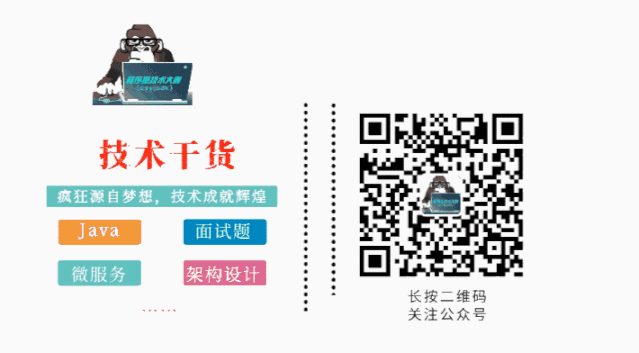JDK1.8 新特性 (六):Stream 的终极操作,轻松解决集合分组、汇总等复杂操作
JDK1.8新特性(五):Stream,集合操作利器,让你好用到飞起来
上一篇JDK1.8新特性(五):Stream,集合操作利器,让你好用到飞起来,主要讲解了关于Stream的基本操作,可以轻松摆脱“遍历、再遍历、再运算”等复杂操作,但Stream远远不止这些。本文将讲述关于Stream的终极操作,让你轻松解决集合的分组、汇总等操作,让其他同事对你刮目相看。
一、Collectors
java.util.stream.Collectors,是从JDK1.8开始新引入的一个类。从源码的类注释上,我们可以知道:<u>Collectors实现了各种有用归约的操作,例如类型归类到新集合、根据不同标准汇总元素等。</u>透过示例,能让我们眼前一亮,短短的一行代码却能处理如此强大、复杂的功能:汇总、拼接、累加计算、分组等。
切记,不要用错哦,是java.util.stream.Collectors,不是java.util.Collections。
换句话说,Collectors结合Stream将成为集合的终极操作,其中,包括:
类型归类:将集合中元素按照类型、条件过滤等归类,存放到指定类型的新集合。
分组:按照条件对元素进行分组,和SQL中
group by的用法有异曲同工之妙。分区:分组的特殊情况,实质是在做二分组,将符合条件、不符合条件的元素分组到两个
key分别为true和false的Map中,从而我们能够得到符合和不符合的分组新集合。最值:按照某个属性查找最大、最小元素。
累加、汇总:用来完成累加计算、数据汇总(总数、总和、最小值、最大值、平均值)。
连接:将元素以某种规则连接起来。
……
二、实战演练
1. 类型归类
将集合中元素按照类型、条件过滤等归类,存放到指定类型的新集合,List、Map、Set、Collection或者ConcurrentMap。涉及以下方法:
Collectors.toList()
Collectors.toMap()
Collectors.toSet()
Collectors.toCollection()
Collectors.toConcurrentMap()
一般都作为终止操作符cololect的参数来使用,并伴随着流的结束。
常用于收集、筛选出集合(复杂集合)中的符合条件的数据,并存放于对应类型的新集合中,便于后续实际业务逻辑处理。
比如,将名字类型归类存在到List<String>集合中:
2. 分组
按照条件对元素进行分组,和 SQL 中的 group by 用法有异曲同工之妙,通常也建议使用Java代码进行分组处理以减轻数据库SQL压力。
分组涉及以下方法:
Collectors.groupingBy(…):普通分组。
Collectors.groupingByConcurrent(…):线程安全的分组。
分组后,返回的是一个Map集合,其中key作为分组对象,value作为对应分组结果。
比如,考虑到People集合中可能会存在同龄人,将集合按照年龄进行分组:
如果我们不想返回Map的value为List怎么办?实际上可以按照下面的方式分组:
考虑到同步安全问题时,怎么办?
采用线程安全的分组Collectors.groupingByConcurrent(…),于是:
3. 分区
是分组的特殊情况,采用Collectors.partitioningBy(…)方法来完成。
该方法实质是在做二分组,将符合条件、不符合条件的元素分组到两个key分别为true和false的Map中,从而我们能够得到符合和不符合的分组新集合。
比如,People集合中人名有中文名,也有英文名,将人名按照中、英文名进行分区:
4. 最值
按照某个属性查找出最大或最小值元素,并且基于Comparator接口来对其进行比较,返回一个Optional对象,并结合Optional.isPresent()判断并取得最大或最小值。
涉及以下方法:
Collectors.maxBy(…):最大值。
Collectors.minBy(…):最小值。
比如,找到People集合中最大、最小年龄的人:
5. 累加、汇总
用来完成累加计算、数据汇总(总数、总和、最小值、最大值、平均值)操作。
计算集合某个属性的总和,类似与SQL中的sum函数。
涉及以下方法:
Collectors.summingInt/Double/Long(…):按照某个属性求和。
Collectors.summarizingInt/Double/Long(…):按照某个属性的数据进行汇总,得到其总数、总和、最小值、最大值、平均值。
比如,计算全体人员的薪资总和:
如果想要得到全体人员的薪资数据整体情况(包括总数、总和、最小值、最大值、平均值),怎么办呢?
难道分别要搞多个Stream流吗?
当然,没有这么麻烦,只需Collectors.summarizingInt方法就可轻松搞定。
6. 连接
将元素以某种规则连接起来,得到一个连接字符串。
涉及以下方法:
Collectors.joining():字符串直接连接。
Collectors.joining(CharSequence delimiter):按照字符
delimiter进行字符串连接。Collectors.joining(CharSequence delimiter, CharSequence prefix, CharSequence suffix):按照前缀
prefix,后缀suffix,并以字符delimiter进行字符串连接。
比如,将People集合中所有名字按照某种连接符进行字符串连接:
三、总结
本文,只是针对JDK1.8java.util.stream.Collectors中最好用的操作进行单独举例说明,不涉及嵌套、复合、叠加使用,实际业务场景下可能会涉及到多种操作的叠加、组合使用,需按需灵活使用即可。
如果你熟悉了上面这些操作,在面对复杂集合、处理复杂逻辑时,就会更加得心应手。尤其是分组、汇总,简直是太好用了。
在JDK1.8的使用过程中,你还遇到哪些好用、好玩的终极操作呢?

版权声明: 本文为 InfoQ 作者【xcbeyond】的原创文章。
原文链接:【http://xie.infoq.cn/article/6f877f527b33cd4e88802a215】。文章转载请联系作者。












评论